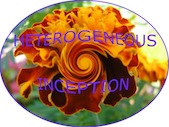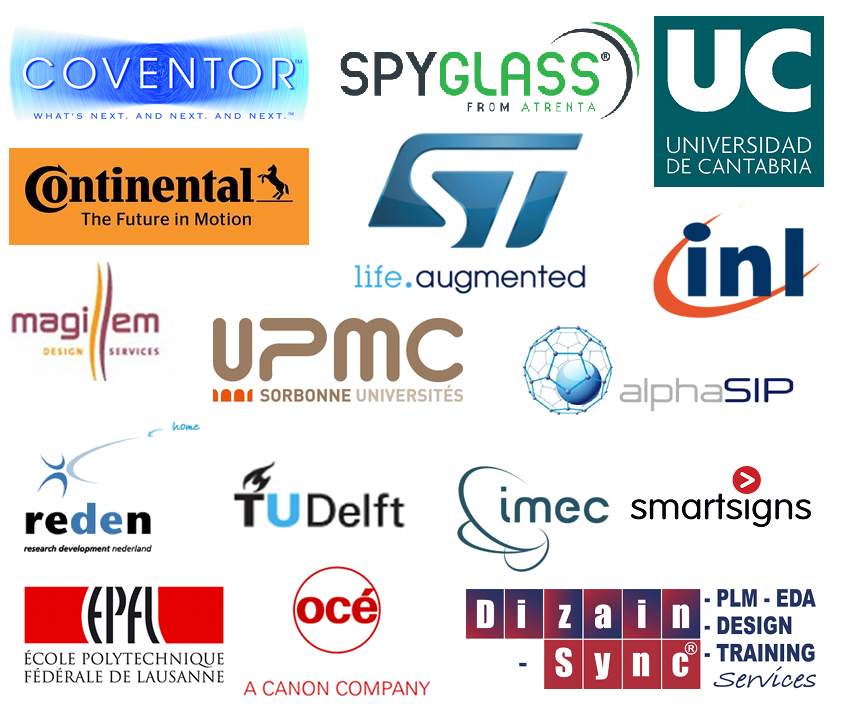| Version 26 (modified by , 12 years ago) (diff) |
|---|
CATRENE (CA701) H-INCEPTION
Heterogeneous Inception
Project summary
New types of emerging applications require microelectronics which closely interact with the surrounding environment in different physical domains (optical, mechanical, acoustical, biological, etc.). The main challenge is to correctly specify, dimension and verify these multi-domain microelectronics assisted systems, to avoid unnecessary errors and redesigns which hamper product quality and thus time to market. Heterogeneous INCEPTION (“H-INCEPTION”) aims at developing and deploying a novel unified design methodology and tools to address the system-level design and verification need for these systems. This will be deployed inside the European Industry with an ecosystem, delivering all design technology ingredients, from design and verification methodology to the essential modeling languages and simulation engines. H-INCEPTION will enable the industrial partners to create multi-domain virtual prototypes by introducing abstract modeling techniques and fast system simulation concepts. A rich consortium from 5 countries composed of semiconductor and fabless companies, equipment suppliers, EDA vendors, research institutes and universities cover different fields and applications domains such as automotive, wireless, avionics and biomedical will all contribute to the creation and validation of this unified design methodology and ecosystem.
General goal
The general goal of H-INCEPTION is to develop and deploy a unified design environment for virtual prototyping of multi-domain microelectronics assisted systems to overcome the challenges related to their specification, dimensioning and verification.
Recent technological advances have led to a broad range of emerging applications of microelectronic systems with a tighter interaction with the surrounding environment and involve different physical domains (optical, mechanical, acoustical, biological, etc.). However, the design and verification of these multi-domain microelectronics assisted systems is often an iterative process, in which the individual parts for each physical domain are developed independently and then combined in the very last stage to realize the final product.
Very often design errors such as functional incorrectness, wrong interfaces, or non-compliance to the initial product specifications are recognized too late in the design cycle. This leads to additional design spins and delayed schedules due to a necessary reimplementation, which all hamper market introduction. Clearly, the important issue is that a global system representation including all involved physical/engineering domains is missing, especially in the early design stages.
In such a context, it would be very beneficial to prove up-front the correctness of the multi-domain system architecture and to have an accurate view of the way in which all domains interact together. The system modeling and verification of the entire multi-domain system is therefore required, preferably even before starting the implementation of the individual parts This requires a modeling/design, simulation, and verification environment that can assist system designers to dimension, partition, and thus to “architect” such multi-domain systems appropriately. A key issue is to validate the interaction between the different physical domains.
Furthermore, the progress in microelectronics following the “More than Moore” trend has enabled embedded microelectronic systems integrating digital HW/SW sub-systems that assist communication interfaces, integrated electrical sensor interfaces, or even micro-electromechanical and CMOS sensors on a single chip. Such microelectronic systems are functionally very tightly interwoven with the embedding application. What is urgently needed is the ability to design the microelectronic system in its context of use, i.e., embedded in its application that includes at least one specific physical domain (mechanical, biological, optical, acoustical, etc.) and its associated environment. A main goal is to be able to model, analyze, verify, and validate the entire system during its development cycle.
In order to overcome these challenges in multi-domain microelectronics assisted systems design, the answer lies in the creation of a unified design environment where the system definition, its design partitioning across the different physical domains, and its integral functionality can be analyzed and verified including the interaction with the overall application environment.
By means of Multi-Domain Virtual Prototypes (MDVP), an abstract view of the entire system is created, which allows its thorough analysis at various design abstraction levels. The development and use of such a virtual prototyping approach requires the introduction of an innovative system design methodology and its associated tools that address the system design needs for multi-domain microelectronics assisted systems. This new methodology and tools are mandatory to handle properly the increasing complexity of these kinds of applications.
H-INCEPTION proposes to deploy the unified design environment inside the European Industry as a customizable ecosystem delivering all critical missing design technology ingredients, from design and verification methodology to the essential modeling languages and simulation engines.
Project partners
- Project partner Brio Apps AlphaSIP
- Project partner STMicroelectronics
- Project partner Continental Automotive
- Project partner Magillem
- Project partner Coventor
- Project partner Atrenta-FR
- Project partner INL
- Project partner UPMC
- Project sub contractor UC
- Project associate partner Fraunhofer
Project contact person
Project initially managed by Serge SCOTTI STMicroelectronics (Grenoble2) SAS 12, rue Jules Horowitz 38019 GRENOBLE serge.scotti@st.com +33 4 76 58 57 03 Project now managed by Olivier GUILLAUME STMicroelectronics (Grenoble2) SAS 12, rue Jules Horowitz 38019 GRENOBLE olivier.guillaume@st.com
Project Internal Documentation
Attachments (15)
- CATRENE.jpg (100.5 KB) - added by 12 years ago.
- Eureka.jpg (2.4 KB) - added by 12 years ago.
- Logo_H-INCEPTION_lowsize.jpg (210.0 KB) - added by 12 years ago.
- image001.png (9.7 KB) - added by 12 years ago.
- dgcis_logo.jpg (7.9 KB) - added by 12 years ago.
- smiet_logo.png (5.2 KB) - added by 12 years ago.
- rvo_logo.jpg (2.4 KB) - added by 12 years ago.
- rvo-logo-nl.png (4.3 KB) - added by 12 years ago.
- rvo_logo.png (9.0 KB) - added by 12 years ago.
-
Console.png (210.6 KB) - added by 10 years ago.
Console
-
OpenPage.png (413.2 KB) - added by 10 years ago.
OpenVM
-
PlotVibrationSensor.png (274.3 KB) - added by 10 years ago.
Plots
-
HInceptionBarcelona2013.pdf (1.2 MB) - added by 10 years ago.
Barcelone2013
-
H-InceptionCannes2014.pdf (941.6 KB) - added by 10 years ago.
Cannes2014
-
H-InceptionBerlin2015.pdf (1.4 MB) - added by 10 years ago.
Berlin2015




